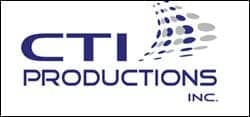
Kurt Woock
Listening to Chuck Gauthier talk about his business is like listening to a coach talk strategy. Regardless of the situation at hand, Gauthier, general manager for Imaging Services, the service division of Shared Imaging, Streamwood, Ill, likely has a plan—an approach that he believes will lead to success. Additionally, he always keeps a long-term goal in mind for both him and his team to strive toward—to build a company based on happy clients. As he says, “It’s a small industry. Overcommitting and underdelivering is not a viable service model.”
Gauthier has been in the business for more than 2 decades and has held multiple positions for various companies. From those experiences comes his ability to understand what providing service means from multiple angles. For Gauthier, fixing the machine is just one step of many. 24×7 sat down with him to find out how he runs his business and what he sees when he looks to the future of the industry.
24×7: Who are Imaging Service’s clients?
Gauthier: Imaging Services is the service division for Shared Imaging. Five years ago, Imaging Services began providing service to Shared Imaging. One-third of our servicing business comes from non-Shared Imaging clients. We are the largest independent service organization specializing in Toshiba CT in the USA. We also service GE CT and MRI. We have a staff of 25 that manages more than 110 systems. Imaging Services can service anything from a single slice up to a 64 slice for Toshiba CT. Imaging Services will continue to add other modalities and OEMs.
24×7: How were you able to go from not having a servicing department at all to running a successful department in 5 years?
Gauthier: We followed a three-phase plan. We called the phases platform growth, program growth, and breakout growth. Platform growth was about staffing, recruiting, learning processes, determining how to field service reports, call management, parts, parts sourcing—all the fundamentals. Program growth was centered around the questions, “Who are we, and why are we different?” “What do we believe in?” And, “What do we stand for?” We needed to determine how we were going to introduce ourselves to our customers. Breakout growth means just that: let’s grow. We’ve got the base model, we have an identity, now let’s go. All three of those continue in motion, even today.
24×7: When you began and asked yourself those questions, what did you decide would be your goals?
Gauthier: Our vision is to obtain the highest number of customer referrals in the industry. Everything we do is to earn that referral. How do we do that? We focus on providing high-quality service, using proactive approaches, and being affordable.
24×7: You offer a system utilization price structure. What does that mean, and what are the advantages to using it?
Gauthier: It means the less you use the system, the less you pay, and the more you use the system, the more you pay. Regardless of the system, if you’re a high-volume user, your price point is higher than a low-volume user. Other companies might use a flat rate, but they give you a usage window. If you go above that, you pay per slice, which can be expensive. Variable pricing is a way to grow with the customers’ growing business rather than penalizing their success.
24×7: The results of a blind survey posted on your Web site stated about one-third of your customers said that you “exceeded expectations.” What’s the difference between meeting expectations and exceeding them?
Gauthier: There were two differences, according to the people who took the poll. The first was communication. The second was room cleanliness after a service event.
We’ve learned to overcommunicate. For example, we once did this spectacular service call—got the system up at 10 pm and told the technician it was up. I got a phone call the next morning from the director of radiology, who was upset and said that the CT was not up yet. I said, “It was up at 10 last night.” No one had told her. She wasn’t informed. We began to think like our clients. She had to answer to her customers—the ER, her managers. Now, we leave a note card for three people after every call. We leave a card on the CT, in the office of the director of radiology, and we walk one down to the ER. We keep them informed throughout the entire process. We always check in the next day.
24×7: What other lessons have you learned by listening to your clients?
Gauthier: It’s important to learn about our clients and who their customers are. That’s the biggest lesson. In order to stay focused, our approach is this: First, fix the customer, which means listen to what their problem statement is and understand their pressures. It’s going to give you a better perspective of how to approach the service call. No service calls are the same. We, the people who service the equipment, often just think, “Just go fix it,” but that’s not what customers are thinking. They have different degrees of urgency. Then we fix the equipment, and then finally we fix the customer again by providing feedback and updates to ensure that we delivered what we promised.
24×7: Your approach rests on you understanding your clients very well. How do you approach solving their problems?
Gauthier: Our way of looking at solving a customer’s problem happens on three levels: clinical needs, operational needs, and financial needs. We listen to our clients and form a flexible solution.
24×7: What challenges do you anticipate facing in the next few years?
Gauthier: I think health care is under more stress than ever before. I think it will be in even greater stress. Demand for affordable service organizations will increase. Reimbursements will go down because of cost reduction. The efficiency factor has to go much higher in health care. I see a transformation from a patient focus to a customer service focus.
Also, ACOs [accountable care organizations] are going to send their patients to locations outside the hospital, where costs are high. We’re going to see a big rise in outpatient facilities and services. They’re going to push out as many lab, imaging, and therapy services to these facilities.
Say you are signing up a 3-year service contract and want to set up a facility by a suburban mall. Are you going to invest in bricks and mortar and invest in all that technology for a 3-year service contract? I don’t think so. But, if you can find a company like Shared Imaging and Imaging Services that has the flexibility, the technology, and the financial strength to support such an initiative, now it’s more of a reality. You can have an imaging service in a mobile environment to test the market and grow if needed to purchasing an in-house system.
24×7: How is Imaging Services a part of the solution?
Gauthier: The health care industry as a whole has somewhat limited access to capital. They can only take out so many bonds, and then they can have outrageous interest payments. That’s why we go back to solving our customers’ problems on three different levels. First, they have clinical and operational needs. They need quality, reliable technology to optimize their efficiency and staff utilization. Last, they have financial needs. They need an economic structure that is flexible. Shared Imaging is part of the solution by offering flexible diagnostic imaging service models: rentals, leasing, and purchase of capital-intensive, advanced diagnostic imaging equipment.
24×7: Can you elaborate on ACOs?
Gauthier: Here’s the problem: Medicare is driving ACOs. Those accountable care contracts are limited to a 36-month contract. Imagine if you’re a CFO at a hospital. You look at this asset that requires you to invest your dollars over a 5-year service, yet your revenue contract is only for 3 years. You don’t know if that will be reinstated or if the reimbursement fee will stay the same or go down in 3 years. Shared Imaging is part of the solution by offering flexible diagnostic imaging service models: rentals, leasing, and purchase of capital-intensive, advanced diagnostic imaging equipment.
24×7: Do you expect Imaging Services to change in response to changes in the industry?
Gauthier: If we don’t change, we’re going to die. That’s not us, that’s any company. As a company, we’ve changed remarkably over the last 1.5 years. We continually refresh our technology and efficiencies in the various ways we deliver our services. We’ve really changed how we approach our clients. We think of the customer’s pressure points. The other part that has changed is flexibility. There was a day when the market allowed people to write 5-year leases. Over the last 1.5 years, we’ve been writing shorter and more flexible service contracts that address the various demands of the market. We’ve changed other attributes in the service contracts: If the customer ever changes the technology, we now allow them to cancel the service contract at any time. Contracts shouldn’t stop a hospital from acquiring new technology.
24×7: What else lies ahead for Imaging Services?
Gauthier: We’re not just a Toshiba CT niche. We’ve diversified. We’re taking our fundamental formula and applying it to the GE product line. We can now have 22 GE CT and MRI products under contract. Additionally, we will keep rolling out new modalities and new OEMs that our market demands.
Kurt Woock is the associate editor of 24×7. Contact him at






